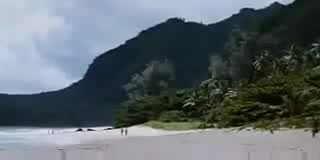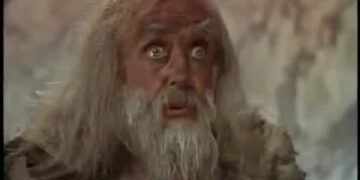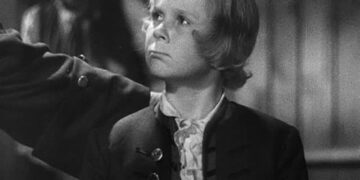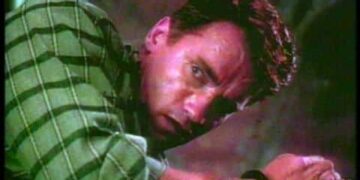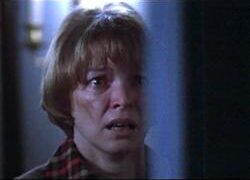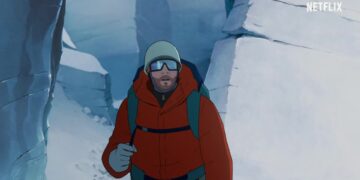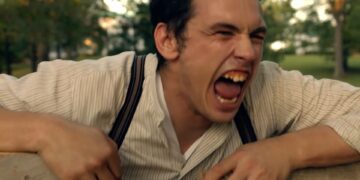‘Lord of the Flies’ is a timeless tale that has captured the imaginations of generations of readers and moviegoers. It is a potent exploration of human nature and the inherent savagery that lies beneath the thin veneer of civilization.
This article aims to provide a comprehensive book summary and an exploration of its 1990 film adaptation by Harry Hook.
The story, while simple in its premise, is profound in its implications. It follows a group of boys stranded on a deserted island, their struggle for survival, and their eventual descent into barbarism.
The book is a chilling indictment of the human propensity for violence and anarchy when the structures of society and order are stripped away.
Brief Biography of William Golding
Sir William Gerald Golding was a British novelist, playwright, and poet. Born on September 19, 1911, Golding’s body of work is known for its deep exploration of human nature and morality. His most famous work, ‘Lord of the Flies’, was initially rejected by numerous publishers before it was finally published in 1954.
The book was a slow-burning success, eventually becoming a staple in the literary world and earning Golding the Nobel Prize in Literature in 1983. Golding passed away in 1993, leaving behind a rich legacy of thought-provoking literature.
Summary and Exploration of the Book ‘Lord of the Flies’
‘Lord of the Flies’ is a gripping tale of survival, power, and the darkness of human nature. The story begins with a plane crash on a deserted island, where a group of British schoolboys is the sole survivors.
At first, they attempt to establish order and mimic the society they left behind, electing a leader and creating rules. However, as days turn into weeks, the veneer of civilization begins to crumble. The boys split into two factions – one led by Ralph, who values order and democracy, and the other by Jack, who promotes savagery and anarchy.
The descent into chaos culminates in murder, as the boys become what they most feared – savages.
In exploring the book, ‘Lord of the Flies’, one cannot ignore its underlying themes – the struggle between the civilizing instinct and the savage instinct, the loss of innocence, and the inherent evil in mankind. These themes are a stark reminder of the thin line that separates civilization from savagery.
Summary and Analysis of 1990 Film ‘Lord of the Flies’ by Harry Hook
The 1990 film adaptation of ‘Lord of the Flies’ by Harry Hook stays true to the book’s narrative, with some minor changes. The film is a visceral depiction of the book’s themes, brilliantly capturing the boys’ descent into savagery.
Harry Hook’s direction brings to life the stark contrast between the initial camaraderie and the eventual division among the boys.
He skillfully uses cinematography to highlight the beautiful yet ominous nature of the island. The performance of the young actors, particularly Balthazar Getty (Ralph) and Chris Furrh (Jack), is commendable. They convincingly portray their characters’ transformation from innocent boys to ruthless savages.
When and Where ‘Lord of the Flies’ Takes Place
‘Lord of the Flies’ takes place during an unspecified nuclear war, which is implied through the presence of a dead parachutist and the boys’ mention of the ongoing war.
The location is an uninhabited tropical island somewhere in the Pacific Ocean, which serves as the perfect backdrop for the boys’ struggle for survival and their eventual descent into savagery.
The island, with its lush jungles, sandy beaches, and looming mountain, initially seems like paradise.
However, as the boys’ civility fades, it transforms into a menacing entity. The isolation of the island from the rest of the world also symbolizes the boys’ detachment from civilized society and the absence of adult authority.
Exploring the Film Locations of ‘Lord of the Flies’
The 1990 film adaptation was shot in Jamaica, primarily in Portland Parish, which is known for its scenic beauty. Locations such as Frenchman’s Cove, Reach Falls, and the Blue Lagoon were used to capture the island’s lush and paradisiacal, yet isolated and ominous, nature. The film’s location significantly contributes to the narrative, mirroring the boys’ transformation from civilization to savagery.
Who’s Who in ‘Lord of the Flies’: Character Guide
‘Lord of the Flies’ features an ensemble cast of characters, each representing different aspects of human nature.
Ralph, the elected leader, embodies order, democracy, and civilizing instinct. Jack, the antagonist, represents savagery, anarchy, and the desire for power. Piggy, Ralph’s right-hand man, symbolizes intellect and rationality, while Simon, the spiritual and prophetic character, represents goodness and purity. The rest of the boys, known as the littluns and the biguns, follow either Ralph or Jack, reflecting the group dynamics in society.
Notable Quotes from ‘Lord of the Flies’
‘Lord of the Flies’ is replete with quotes that offer insight into human nature and society. Some notable ones include: “Maybe there is a beast… maybe it’s only us,” which implies the inherent evil in mankind.
“The thing is – fear can’t hurt you any more than a dream,” reflects on the nature of fear, while “We did everything adults would do. What went wrong?” is a chilling commentary on the flaws of adult society.
Inside the Soundtrack by Philippe Sarde
Philippe Sarde’s haunting and atmospheric score greatly enhances the film’s narrative. The music, often tribal and ominous, perfectly captures the mood of the story. The soundtrack serves as an auditory mirror to the boys’ transformation from civilized individuals to savages.
Curiosities and Trivia about ‘Lord of the Flies’
Despite its popularity now, ‘Lord of the Flies’ was initially rejected by 21 publishers. The book’s title is a literal translation of Beelzebub, a name often associated with the devil. In the film, the conch shell used by the boys was a real one, found by the film crew on the beach in Jamaica.
Dressing Like the Characters: Tips for Cosplay
Cosplaying ‘Lord of the Flies’ offers a unique opportunity to bring these iconic characters to life. Dressing up as Ralph could involve a school uniform with a tropical twist, while embodying Jack could involve tribal paint and makeshift weapons.
Props like glasses for Piggy and a conch shell for the group can add authenticity.
Understanding the Ending of ‘Lord of the Flies’
The ending of ‘Lord of the Flies’ is both tragic and relieving. As Ralph is hunted by Jack’s tribe, a naval officer arrives on the island, rescuing the boys. The officer’s disappointment at the boys’ savagery is a potent commentary on the thin veneer of civilization.
The boys’ rescue, while relieving, doesn’t erase the horrors they’ve inflicted, leaving a lasting impact on them and the readers.
The Legacy of ‘Lord of the Flies’: Remake, Sequel, and Spin-off
‘Lord of the Flies’ has left a profound legacy, influencing numerous works of literature and film. The book has been adapted into film twice, in 1963 and 1990. A female-centric remake is reportedly in the works, sparking debates about the book’s themes.
While there isn’t a direct sequel or spin-off, the book’s influence is visible in various media, from novels like ‘The Hunger Games’ to TV shows like ‘Lost’.
Other Noteworthy Works by Harry Hook
Harry Hook has directed several noteworthy films besides ‘Lord of the Flies’. ‘The Kitchen Toto’ (1987) and ‘Photographing Fairies’ (1997) are some of his popular works. His unique directorial style, marked by vivid storytelling and profound themes, is evident in all his films.
Similar Media to ‘Lord of the Flies’
If ‘Lord of the Flies’ intrigued you, there are several similar works to explore. Books like ‘The Hunger Games’ by Suzanne Collins and ‘The Maze Runner’ by James Dashner tackle similar themes of survival, power, and human nature. Films like ‘The Beach’ and TV shows like ‘Lost’ also draw parallels with ‘Lord of the Flies’.
Exploring Other Works by William Golding
William Golding’s literary prowess extends beyond ‘Lord of the Flies’. His other works like ‘The Inheritors’ and ‘Pincher Martin’ also explore deep themes of human nature, morality, and civilization. Each of his works offers a unique perspective on humanity, making them worth exploring.
Book Club Questions for ‘Lord of the Flies’
Discussing ‘Lord of the Flies’ in a book club can spark intriguing conversations. Questions like “What do the characters represent in the story?”, “How does the island transform in the narrative?”, or “What is the significance of the book’s title?” can ignite deep discussions about the book’s themes.
Video Games Inspired by ‘Lord of the Flies’
Video games like ‘Rust’ and ‘The Forest’ draw heavily from ‘Lord of the Flies’. These survival games, where players are stranded in an isolated location, are reminiscent of the book’s narrative. They incorporate elements of power struggle, survival, and human nature, much like ‘Lord of the Flies’.
A Travel Guide to Visit ‘Lord of The Flies’ Locations
Visiting the film locations of ‘Lord of the Flies’ can be an adventurous journey. Portland Parish in Jamaica, with its lush landscapes and pristine beaches, offers a chance to experience the beautiful yet ominous nature of the island in the story.
Conclusion
‘Lord of the Flies’ is an enduring masterpiece that offers a profound exploration of human nature. Its compelling narrative, memorable characters, and thought-provoking themes make it a timeless classic.
Whether you’re reading the book or watching the film, ‘Lord of the Flies’ is sure to leave a lasting impact.


